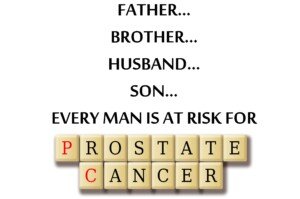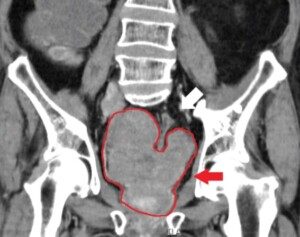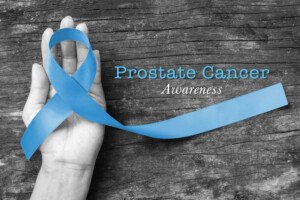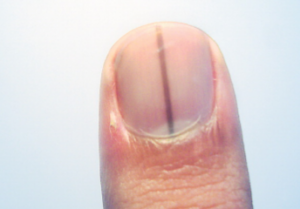Quitting dieting altogether and giving up on all weight loss attempts has been touted on Instagram and TikTok as a giant step towards “recovery.”
But it does not necessarily equate to recovery from an eating disorder — especially for those who are already morbidly obese.
While it may seem like someone is recovering by abandoning restrictive eating patterns, we need to realize that restrictive eating habits will not maintain morbid obesity.
Therefore, someone who’s been significantly overweight, and especially if over the years they’ve been steadily gaining, has not been restricting their caloric intake.
How do we know this? Because for a woman to maintain, for instance, 280 pounds on a 5’5 frame, she’d have to be consistently taking in large quantities of food to sustain this body weight.
Research shows that the caloric requirements for weight maintenance depend on factors like basal or resting metabolic rate and physical activity.
For a woman at this weight, the daily calories to maintain such mass may be as high as 4,000 or 5,000, depending on activity level and muscle composition.
A study published in The American Journal of Clinical Nutrition (2005) explains that higher body weight correlates with increased energy expenditure, requiring greater caloric intake to maintain weight.
The “energy expenditure” that’s referred to here, and in other such studies, means the energy the body requires when existing — such as breathing during sleep, digestion, heart function, kidney function — all bodily functions — as well as minute-to-minute movement while awake, such as brushing one’s teeth, applying makeup, changing a diaper, walking the dog, dancing at a party, showering.
So if someone who’s morbidly obese, who’s been this size for years without ever getting underweight, claims that they’re in recovery from restrictive eating habits, this needs to be taken with a big grain of salt – or quite bluntly, not believed for a moment.
Basal Metabolic Rate
When I was a personal trainer, I gave a lot of clients a test for basal metabolic rate (BMR) that involved spending 15 minutes breathing into a face mask with an attached tube that was connected to a machine, while their nose was plugged. These machines are pretty accurate, too.
It was very predictable: The more a client weighed, the higher their BMR number.
My biggest client weighed 320. Her four-digit BMR began with a 3 (I don’t recall the specific number).
We also must take into consideration the definition of BMR.
It’s the number of calories per day the body needs to perform essential life functions such as breathing, circulating blood, pumping the heart, producing hormones and maintaining body temperature.
BMR is the energy your body requires just to keep basic bodily functions going and does not include physical activity.
The 320 pound client, then, needed three thousand-something calories a day just to stay alive AND maintain the 320. Of course, she could survive on 2,000 calories, but this would cause fat loss.
The BMRs of my clients always began with the number that their weight began with.
The second number in the BMR value was always within a few numbers of the second number of their weight.
So if a woman weighed 250, her BMR might be 2610, 2650, maybe 2422 or in the 2500s.
The general rule is to add a zero after the person’s weight to get the approximate BMR.
My thin female clients’ BMRs were typically 1,200 to 1,500.
Before anyone insists that they themselves can’t lose excess fat no matter what they do, they should inquire about having this breathing test done for their BMR.
BMR is influenced by age, gender, weight, height and body composition (muscle to fat ratio).
It accounts for the largest portion of your daily caloric expenditure, typically around 60-75%.
And don’t forget: BMR does not take into account the calories burned each day through physical activity, ranging from sitting in a chair texting to hitting the gym hard and everything in between.

Morbid obesity was once so rare that even in the 1920s, it was commonly part of circus shows. The woman here was actually billed as the largest woman alive in 1922. Yet her size is commonplace on TikTok and Instagram. Percentage-wise, the prevelanece of morbid obesity has skyrocketed since the “circus freak show era.” Genetic mutations don’t occur over a hundred years. Being 150+ pounds overweight is driven by extreme overconsumption of highly processed food.
Again, we must approach it with caution when a woman or man with significant overweight claims that they’re in recovery for restrictive eating, when their history is that of always having been in the morbidly obese range as an adult.
Of course, there may have been times, over the years, when that 280 pound woman was restricting her food intake to lose weight.
The restriction may have been non-sustainable attempts to lose weight by skipping breakfast and lunch; or eating only within a six hour time frame; or trying to stick to 1,200 calories a day.
- These are not sustainable eating habits.
- Weight loss will result if such diets are sustained short-term.
- But due to their low calorie or deprived nature, they’re not sustainable long-term.
- They may have lost some weight but were still morbidly obese or may have even dropped into the moderate obesity range.
- But the lost weight is eventually regained.
- She decides to give up permanently, and it’s not long before she reaches 310 – yet considers herself in eating disorder recovery.
- Though she no longer slashes calories, she’s still in the throes of an eating disorder: consuming significantly more food than her body needs — and often for the wrong reason: emotions, boredom, anxiety.
Non-sustainable or unrealistic diets are not a morbidly obese person’s only options for weight loss.
Portion Control: Works Like a Charm

Portion control. Just because it’s not complicated, quirky or requires an app doesn’t mean it’s not exceptionally effective for weight loss. Freepik
There’s also portion control – simply scaling back on large portions while continuing to eat one’s favorite foods.
Many people who decide to lose weight this way, however, also make a concerted effort to eat healthier by limiting processed foods and filling up on vegetables and fruit in place of ice cream, munchies, cookies, candy and other popular snacking staples. Soda is ditched for water or Stevia-sweetened beverages.
Trying to adhere to portion control and limiting highly processed foods is NOT a form of restrictive eating or eating disordered patterns.
In fact, ask anyone who’s on a diet of mostly natural forms of protein (ground lamb, tuna fish, bison, grass-fed beef, chicken, eggs), nuts, seeds, fruit and vegetables just how difficult it actually is to hit 2,000 calories a day on a consistent basis.
It’s not easy! But it’s super easy to exceed 4,000 calories a day when you eat mostly ultra-processed foods. In fact, just a single meal at a restaurant can exceed 1,500 calories.

Three pieces of French toast (including three eggs), 3 Tbs syrup and 2 Tbs butter = about 1,000 calories: a single meal! Add 150 calories for a glass of whole milk and 100 calories for a glass of orange juice. We live in a society where it’s way too easy to average 6,000 calories a day!
These foods can leave you feeling quite hungry shortly after eating them.
Many types of processed foods contain loads of sugar or simple carbs which have a potent effect on the brain, which is why it’s often considered an addictive substance.
If You’re Morbidly Obese You Have an Eating Disorder
Food is so often consumed for the wrong reasons including that of stress, anxiety, depression, boredom or as a conditioned response to a stimulus such as sitting at a computer, watching TV or reading.
It doesn’t make sense to say that an obese person is currently in recovery for an eating disorder – unless they’ve been steadily losing weight (though still clinically obese) due to implementing portion control and learning how to recognize true hunger cues rather than non-hunger-related triggers for eating (which pack on the calories).
But if a severely overweight individual is not losing weight, and especially if they’re gaining, they are certainly not in recovery, let alone “recovered,” from an eating disorder.
When food continues to be used as a way to cope with emotional turmoil, past trauma or for any reason other than hunger such as boredom, this is not recovery.
A very heavy person may think they’re recovered because they’re no longer experiencing the frustration and aggravation of not being able to lose weight or keep lost weight off.
They may think they’re healed because they’ve given themselves the freedom to eat large quantities of high-calorie, high-fat comfort food.
They may also falsely think they’re healed because they’ve talked themselves into believing that obesity doesn’t have any cause-and-effect association with chronic disease.
Removing the structure of dieting for intentional weight loss, when one is significantly overweight, can sometimes lead to less control over one’s eating habits, contributing to further overeating or emotional eating, which can perpetuate the disorder.
False Sense of Being Healed
A person who’s been trying to lose weight — through crash dieting, too much caloric restriction or via gimmicky fad diets that ban favorite foods — often associates food with guilt, shame and may even link it to self-worth.
Quitting dieting and removing these limits might bring some relief and a sense of “finally being free” in the short-term.
But it will fail to address the emotional triggers behind excessive food consumption.
Eating without restriction, aka “food freedom,” can lead to feelings of loss of control or increased distress, especially if food continues to be used as a coping mechanism.
An Illusion
The process of giving up dieting might be interpreted as recovery, but without addressing the emotional and psychological factors that contributed to the disordered over-consumption in the first place, this change in mindset should not be equated to a recovery.
A study published in The American Journal of Clinical Nutrition (2021) found that obese women and men who cease weight loss attempts — but do not address emotional eating behaviors — can still experience difficulty with compulsive food intake, emotional eating or binge eating.
This means that tossing in the towel with weight loss attempts, in and of itself, does not resolve the underlying issues that led to eating one’s way into morbid obesity.










































